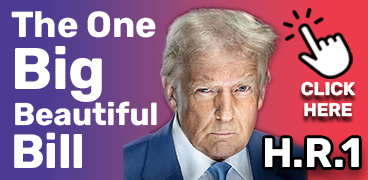
Mega Doctor News
Texas Border Business / Mega Doctor News
The “One, Big, Beautiful Bill Act” (OBBB), signed into law on July 4, 2025, introduces a new restriction aimed specifically at high-income taxpayers. The law states, “effective for years after 2025, for taxpayers in the highest tax bracket (37%), a new provision will limit the tax benefit of itemized deductions to a maximum rate of 35%.”
In plain terms, this means that while individuals in the top federal income tax bracket currently face a marginal rate of 37 percent, their deductions will only reduce their tax liability as if they were in a lower, 35 percent bracket. Even if they qualify for significant deductions, the law prevents them from applying those deductions at their actual tax rate.
Under previous law, itemized deductions were generally applied against income at the taxpayer’s marginal tax rate. For someone in the 37 percent bracket, every dollar deducted reduced taxable income by 37 cents. Beginning after 2025, the new cap ensures that those same deductions will only reduce tax liability by 35 cents per dollar.
The change affects all itemized deductions for high earners, including charitable contributions, mortgage interest, medical expenses (where applicable), and state and local tax deductions. By placing this ceiling on the value of deductions, Congress has effectively created a limit on how much tax relief high-income taxpayers can receive.
Supporters of the provision argue that the measure makes the tax system more equitable. Since deductions are worth more in higher tax brackets, wealthier individuals receive larger benefits for the same deductible expense than middle-income taxpayers. By capping the benefit at 35 percent, the law narrows this gap. For example, under the old rules, a $10,000 charitable donation from a taxpayer in the top bracket would save $3,700 in taxes. Under the new rule, the same $10,000 donation would save $3,500—a $200 difference.
Critics argue that the change may discourage certain kinds of deductible spending, especially charitable giving. Nonprofit organizations have historically pointed out that tax incentives play a role in encouraging donations, particularly from higher-income households that account for a significant share of charitable contributions. By reducing the tax value of those deductions, the law could reduce the incentive to give.
This measure is one of several targeted at wealthier taxpayers in the OBBB Act. The legislation also raises the cap on state and local tax deductions but phases out the benefit for individuals earning more than $500,000 and couples earning more than $1 million. Combined with the new 35 percent cap on itemized deduction benefits, these changes signal a deliberate effort to limit tax advantages for those at the top of the income scale.
While the adjustment is relatively modest in percentage terms, it represents a significant change in principle. As the law clearly states, “for taxpayers in the highest tax bracket (37%), a new provision will limit the tax benefit of itemized deductions to a maximum rate of 35%.” Starting in 2026, the country’s wealthiest taxpayers will see deductions reduced in value compared to past years, marking a shift in how the federal tax code treats high-income earners.
See related stories:










